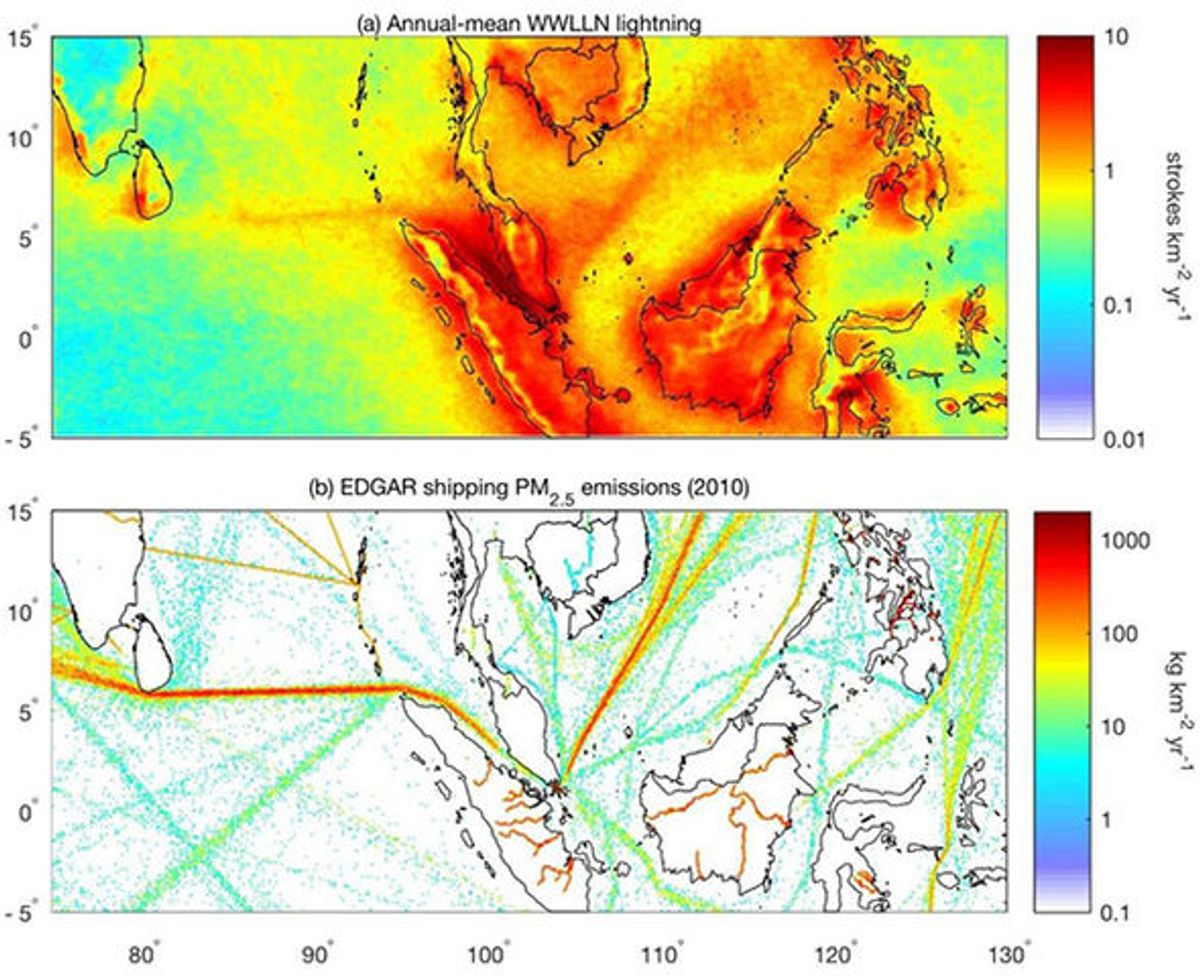Exhaust from the diesel engines that propel ships can trigger strong thunderstorms, scientists have found. There is twice as much lightning right above two heavily trafficked shipping channels in the Indian Ocean and the South China Sea than in nearby areas with similar climates, their study shows.
The research is important for understanding how manmade particle pollution can affect storms and lightning, as well as the planet’s climate.
Clouds form when water vapor condenses on tiny solid or liquid particles in air. Researchers have known since the 1970s that pumping soot and pollutants into the atmosphere enhances low-lying clouds, which reflect planet-warming sunlight and offset some of the greenhouse effect. This is the premise behind the geoengineering method called cloud seeding.
For thunderstorms, you need dense, towering cumulonimbus clouds that can reach altitudes where their water droplets freeze. Collisions between ice and soft hail in the cloud creates the charge separation that triggers lightning.
Researchers hadn’t previously established a link between particle pollution and the frequency and intensity of thunderstorms. Filling in that gap in our understanding was critical because lightning kills people, damages structures, causes wildfires, and converts nitrogen to smog-producing nitrogen oxides.
Joel Thornton, an atmospheric scientist at the University of Washington, and his colleagues analyzed the correlation between lightning over shipping lanes and ship exhaust particles. Why shipping channel emissions? “It’s an example of pollution where we know the source very well, and it’s away form all other factors that could affect storm clouds,” Thornton says. “It really gives us a perfect piece of evidence.” They published their results in the journal Geophysical Research Letters.
The team studied 1.5 billion lightning strikes recorded between 2005 and 2016 by the World Wide Lightning Location Network. Dozens of radio receivers spread around the world use triangulation to accurately locate lightning flashes to within 5 kilometers.
When the researchers mapped the lightning data, lines of intense lightning activity were concentrated right over the two shipping lanes. These two channels are some of the busiest in the world, and they are also relatively narrow routes, so emissions are concentrated in the atmosphere above them.
The highly concentrated particulate matter in diesel exhaust leads to more, smaller cloud droplets that can rise easily to create tall, icy storm clouds, the researchers believe.
The results of this study will improve our understanding of the net effect of particle pollution on the Earth’s climate, Thornton says. Clouds’ role in climate change is one of the most complex variables in forecasting global warming. Though clouds block sunlight, producing a cooling effect, the ice particles in thick, tall clouds can act almost like a greenhouse gas, he says. “So the fact that we’re making more high clouds could be having a warming effect.”
Prachi Patel is a freelance journalist based in Pittsburgh. She writes about energy, biotechnology, materials science, nanotechnology, and computing.



